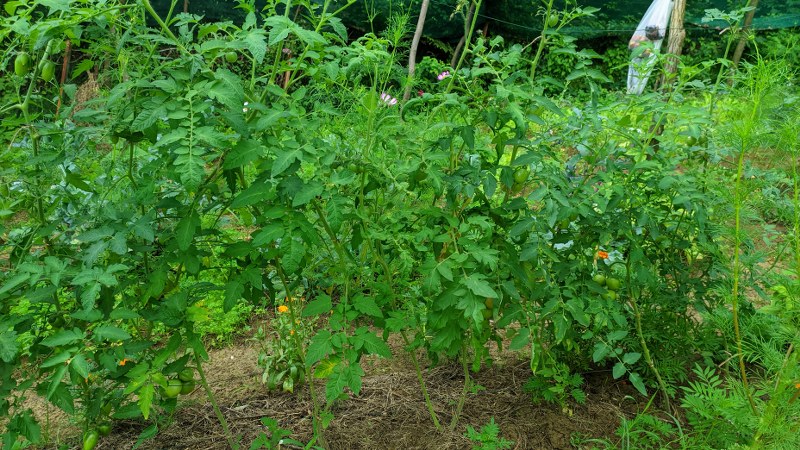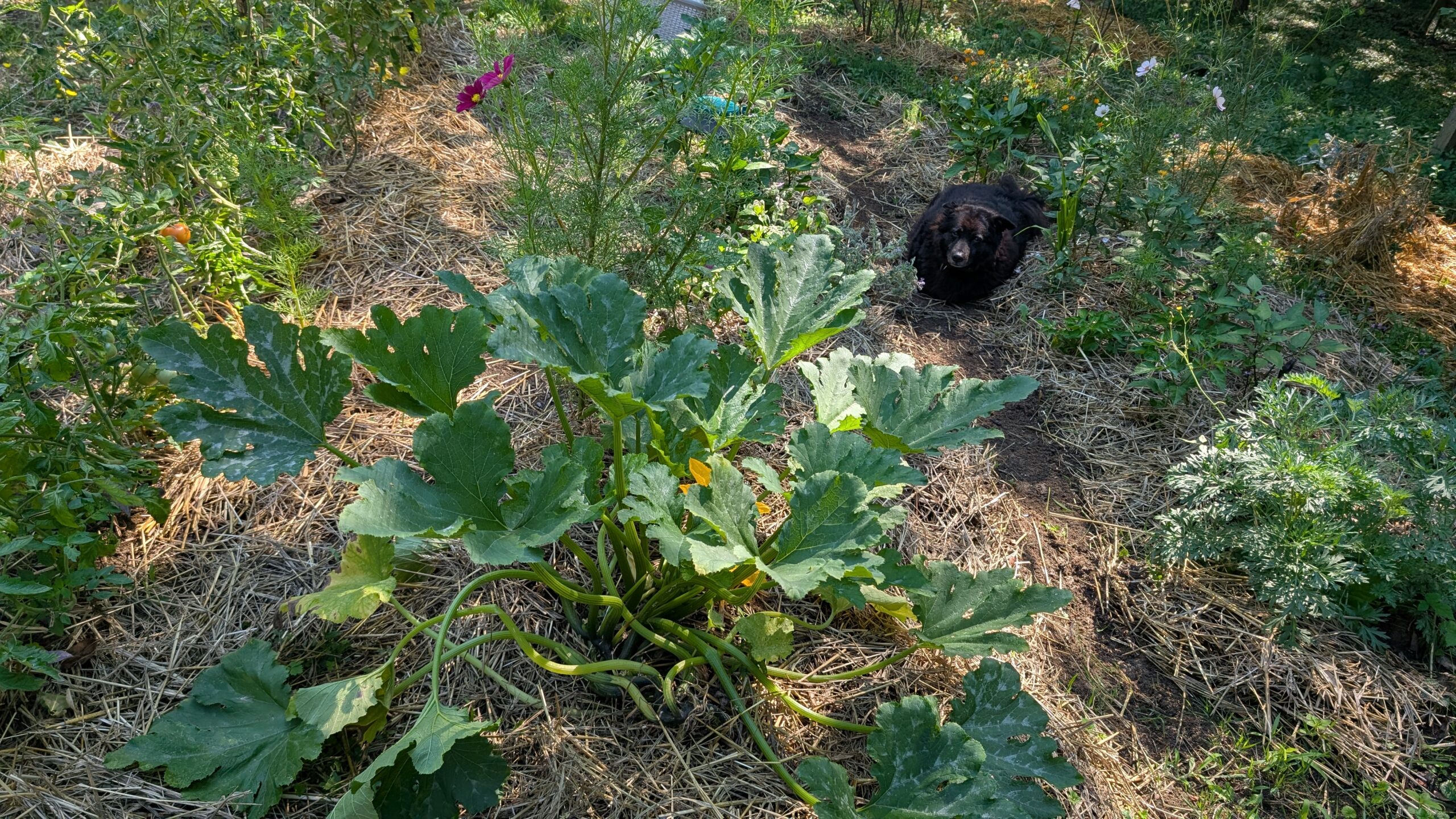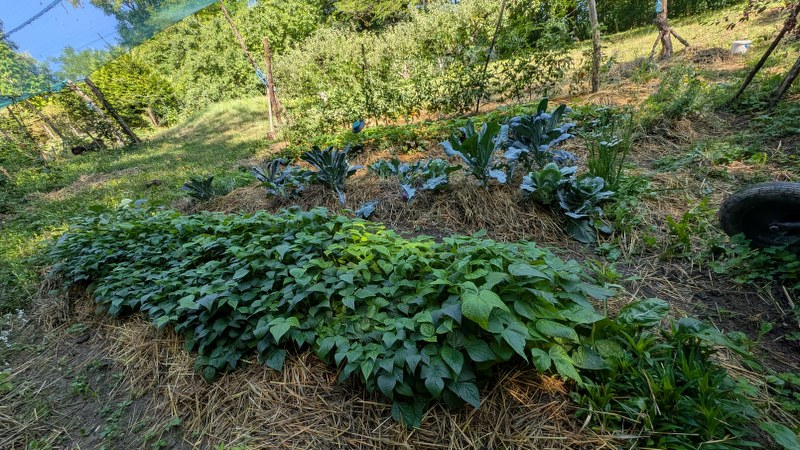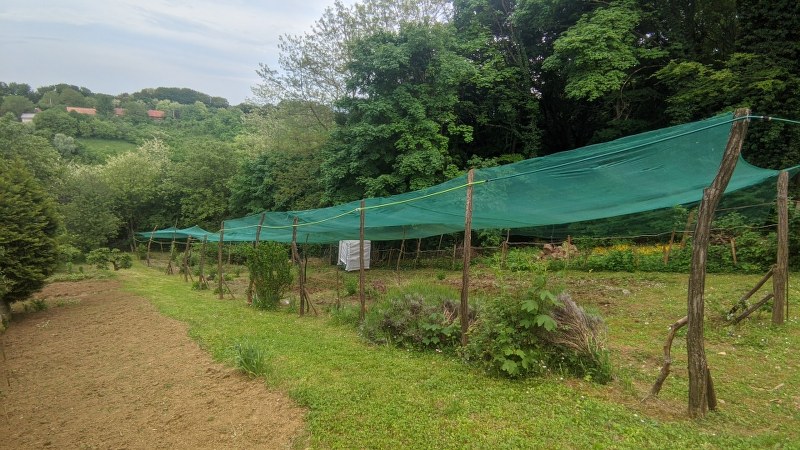Tomatoes, one of the favorite summer vegetables are grown in most gardens worldwide. Some grow them outside, some in the greenhouse, but they all use some type of support for the indeterminant plants. Can the way we lift and secure them help our battles against diseases? Or is it simply a matter of our own preferences?
Over the years different growing solutions have emerged. Cages, trellis, stakes, poles, and branches. Every gardener has their own preferred way of growing tomatoes. But, do all of them work for every garden? Not really. With experience and years most of us find a way that works in our garden, so what works best in my slope garden in the middle of the forest? Wires, and lots of them.
Different growing methods
During the past 15 years, I’ve tried many different ways to grow tomatoes. I grew them on stakes, poles, individually, groups of more plants on one big pole, cages, strings… any new idea I saw I tested. Most of them worked ok. Some would work better if I had a flat garden. But, with none of the methods did I see any improvement in disease management.
Since a fixed wooden trellis is not an option in my garden, due to the very big slope and crop rotation need, I decided to go for a less permanent, but equally effective way of growing tomatoes. I started using big poles and wires. Initially instead of wires I used twine, but it can easily break, so I switched to wires.

How to grow tomatoes on wires
What I love about this method is that the poles, once placed, can be used for many different things. I can use them for pole beans, cucumber netting, pepper support, zucchini support, and even for growing tall flowers that can easily break in the wind. This makes crop rotation easily possible. Sure, the poles need to be long, big, and heavy, but once in place, they can stay in the same spot for years.

Growing tomatoes on wires is actually pretty easy. All you need to do is follow them as they grow and tie them to the wire. I add a new wire every 30cm(11.8in) and as soon as tomatoes reach the next wire level I tie them again. Once the branches get thicker I can loosen the knots around them without the whole plant falling off the stakes.
The wires can easily support the weight of multiple plants, and we can actually grow more tomatoes in one place than with individual poles or cages. On my two beds with tomatoes on wires I have over 80 tomato seedlings, and they all have enough room.

Advantages
Easy pruning, harvest, and wind management
The biggest advantage of this type of growing is easy control of the tomatoes. Tomatoes are easily pruned, every sucker is easily visible, and removing the excess leaves can be done very easily. There’s no need to untie the whole plant to prune the excess branches. You simply cut the branches that are sticking away.

The whole plant is visible from both sides, and any kind of problem with the plant can be spotted immediately. Fruits are also reachable, free, and can be harvested without the need to search through the plant. You can spot them from a big distance. So no need for a lot of bending in search of colorful tomatoes.

Since the tomatoes are tied in different levels, they are perfectly secured from the wind impact. Stakes, cages, and individual poles can easily fall under the weight of the plant and gusts of the wind. This is especially the case in a sloping garden where you additionally have the gravity that’s pulling the plant down the garden. The wires hold all the tomatoes in place, and under a strong wind, they move all together like a big flag. This movement will not make them fall or break. We had 11 big storms here, one of them was supercell with hurricane-level 2 winds and my tomatoes got just slightly pushed in the direction of the wind. None of them fell or got damaged.

Late blight prevention
Believe it or not, wires are a great way of preventing and controlling late blight, which is especially important in a forest garden. Forest gardens are usually much more humid than a regular garden, so the chances of late blight are very big. Although removing the first floor of leaves can be helpful on poles and cages also, there’s still a big issue with the lack of ventilation around the plant, which keeps the moisture close and blight spreads faster. What I’ve noticed this year is that when tomatoes are grown on wires, they are ventilated better and late blight appears later and spreads slower.

This year has been a real nightmare and a perfect disease incubator in my garden. The excess rain, showers in the middle of a very hot day, and storms followed by a morning of fog and cold, are fueling the late blight like crazy. There isn’t a single garden in the area that doesn’t have late blight. Even the ones that fully spray the plants are having difficulties keeping it under control.
Yes, I also have late blight on my tomatoes. But compared to other gardens and other years, the spread is limited to just two cherry varieties. I’ve been removing the leaves under the first fruits from the beginning of the year and this has slowed the blight a lot, but also since the plants have a lot of air most of them are completely healthy for now. Compared to the tomatoes in the test orchard bed, and front yard pots, where most of the tomatoes are already gone, the wire ones look amazing.

Conclusion
Growing tomatoes on wires might not be the first option due to the need for strong poles, but I recommend it, especially in the forest and slope gardens. The much better ventilation will help prevent diseases, and the tomatoes will be much easier to harvest.

Also, instead of carrying dozens of stakes or poles up and down the slope, once set in place the strong poles will be here for years. That’s a huge advantage for us gardeners with a slope. Anything that can prevent unnecessary weight carrying is a huge plus in my book.





Leave a Reply